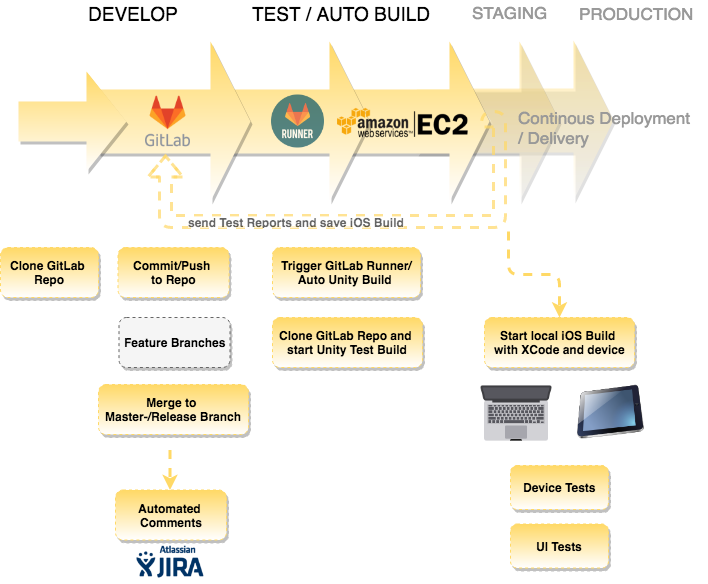Tag: Ci-Pipeline
Setting up a CI/CD pipeline in Gitlab
Introduction For all my university software projects, I use the HdM Gitlab instance for version control. But Gitlab offers much more such as easy and good ways to operate a pipeline. In this article, I will show how we can use the CI/CD functionality in a university project to perform automated testing and an automated…
Radcup Part 3 – Automation with Gitlab CI/CD
Written by: Immanuel Haag, Christian Müller, Marc Rüttler The goal of this blog entry is to automate the previously performed steps. At the end all manual steps should be automated when new code changes are added to the repository. The new version of the backend will be made available in the cloud at the end.
CI/CD with GitLab CI for a web application – Part 3
Hosting your own GitLab server Some users might have concerns regarding security using GitLab for a variety of purposes, including commercial and business applications. That is, because GitLab is commonly used as a cloud-based service – on someone else’s computer, so to speak. So setting it up for running it on your own server is…
CI/CD with GitLab CI for a web application – Part 2
GitLab Our first approach was to use the existing GitLab instance of HdM for our project. For them, a shared runner was already defined on which we could run our jobs, so we were able to focus on the CI process itself. This plan worked out at first. We simply defined build and test jobs,…
CI/CD with GitLab CI for a web application – Part 1
Introduction When it comes to software development, chances are high that you’re not doing this on your own. The main reason for this is often that implementing components like UI, frontend, backend, servers and more is just too much to handle for a single person leading to a slow development process. So, you have to…

Continuous Integration Pipeline for Unity Development using GitLab CI and AWS
This blog entry describes the implementation of a Continous Integration (CI) pipeline especially adapted for Unity projects. It makes it possible to automatically execute Unity builds on a configured build server and provide it for a further deployment process if required.
